Shetland Wildlife Tour 2012
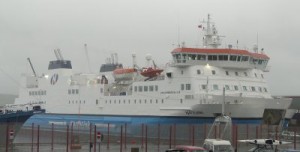
We were recently lucky enough to make a return visit to the Shetland Islands, which we first visited in 2010 as part of our motorhome tour of Scotland.
This time, we went directly to Shetland and spent 10 days touring the islands and photographing the wildlife. As happened last time, we were blessed by the weather which was mostly dry and often sunny throughout our visit.
Getting There
As time was limited, we wanted the quickest possible way to get to Shetland. This means catching the Northlink Ferries service from Aberdeen to Lerwick, which sails overnight every day.
The advantage of this is that you can drive up to Aberdeen during the day, eat and sleep on the ferry overnight, and arrive the next morning without having lost any time.
You can choose between reclining seats (free) and cabins (about £100 for a double) on the ferry, the cabins are worth it if you can afford the extra, but certainly not essential.
Wildlife
Shetland is home to a fantastic variety of wildlife, mostly of the winged variety. This time round we were better prepared than last time and saw almost everything we hoped to see — although there’s still enough left to justify another trip!
Here are some of the highlights.
Shetland Mainland
The main highlight of the mainland in avian terms is the RSPB site at Sumburgh Head, at the southernmost tip of the island. Sumburgh is one of the main UK breeding sites for puffins and there are thousands, often very close to the paths and cliff edges.
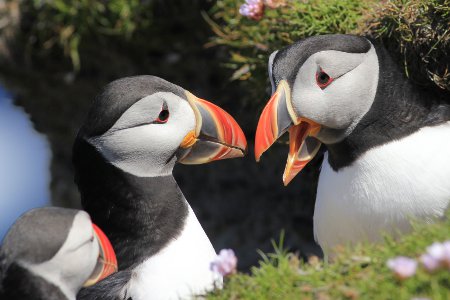
It’s a photographer’s paradise, especially on a sunny day, and we spent many hours there.
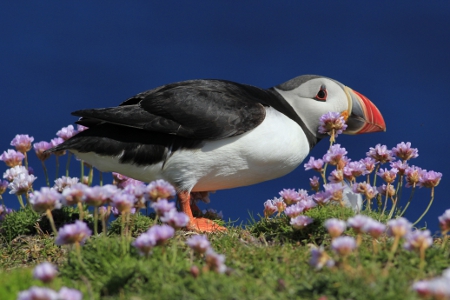
While on the mainland, we also visited some of our favourite spots from last time, including St Ninian’s Isle, Eshaness lighthouse and Scalloway, for some shopping at the excellent butcher/general store.
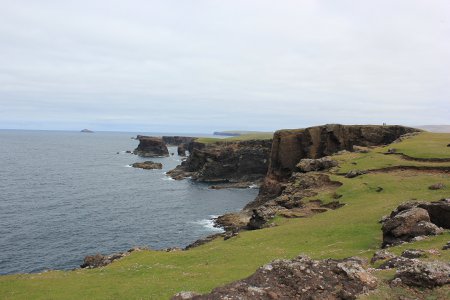
Yell
While on Yell we noted that the excellent motorhome parking we used last time at Burravoe Pier has now been upgraded to provide proper level parking and campsite facilities — but now costs £10 per night.
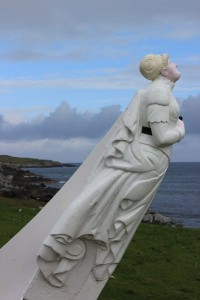
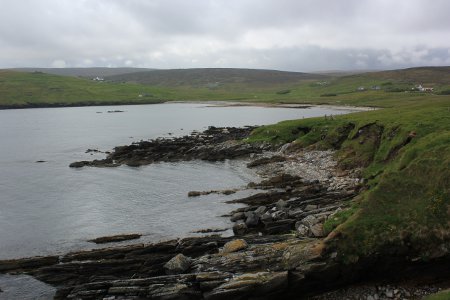
Unst
Hermaness Nature Reserve is near the north of this most northerly island and has the additional merit, compared to Sumburgh Head, of being much harder to get to, as it’s a stiff 40 minute walk up a hill from the car park. This ensures that there are very few ‘casual’ visitors compared to most such places!
On a fine day, Hermaness is an amazing place to walk and watch birds — puffins, gannets, fulmars, great skuas and more. The first time we went, in 2010, it wasn’t fine and we got completely soaked and didn’t see any birds. Second time lucky:
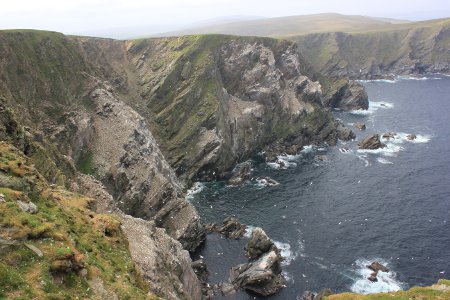
We also managed to spot an otter in Norwick Bay:

Of course, no visit to Unst would be complete without a stop at Britain’s most outstanding and well-kept bus stop, which had been decked out with a Jubilee theme to commemorate the Queen’s 60th year on the job:

Fetlar
We travelled to Fetlar (accessed by ferry from the Gutcher terminal at Yell or Belmont on Unst) in the hope of seeing the Red-Necked Phalarope, an extremely rare bird known to come to the Loch of Funzie on Fetlar to breed each year. It spends the rest of the year at sea, off the Arabian Peninsula.
Phalaropes are both small and rare and we were disappointed in our quest but we did get a rather fine consolation prize, in the form of several Red-Throated Divers:
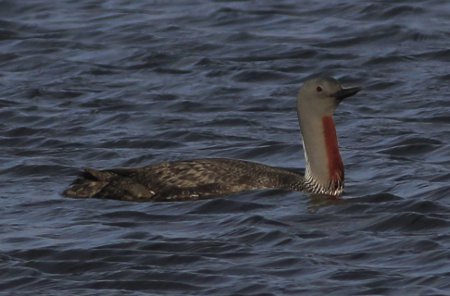
Bressay & Noss
We had planned to start our trip with a visit to the island of Noss, which is accessed via the island of Bressay. Noss is a small island that you can walk around in a few hours but which is home to many birds and just a few (one house) humans. Access is via an informal ferry service in a very small boat, which means it is prone to interruption by the weather.
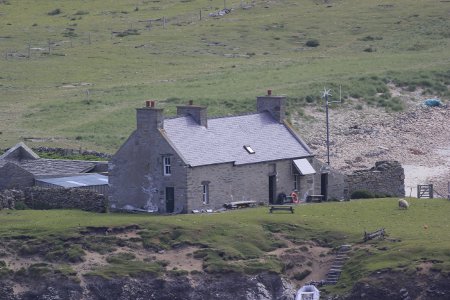
There is a number you can ring after 9am each day to see if the service is running, but if you just turn up, as we did, you may find it’s not, as we did! This was signified by a red flag flying in the garden of the house on Noss — at the time, it seemed a little overcautious, but as the day progressed and the weather changed, it was clear that the boatman knew exactly what he was doing. We would certainly have been stranded on Noss overnight, if not longer.
Maybe next time — although a frustrated French couple we bumped into on Bressay had already tried and failed twice, so maybe not next time!
